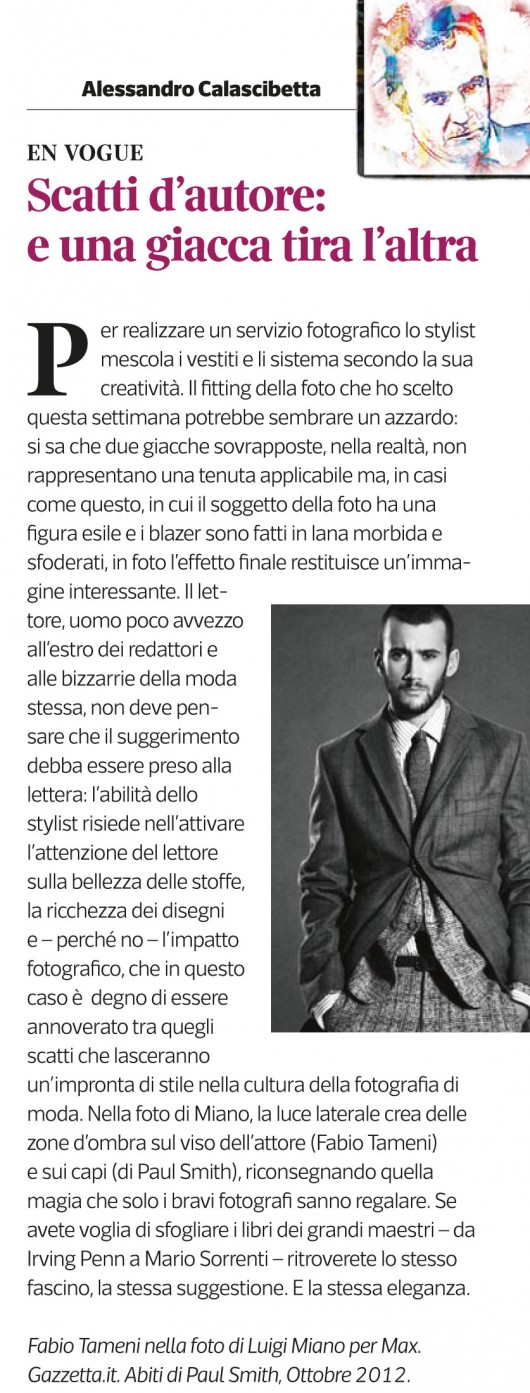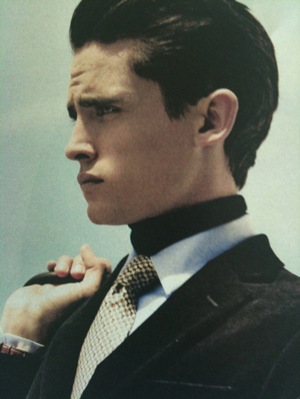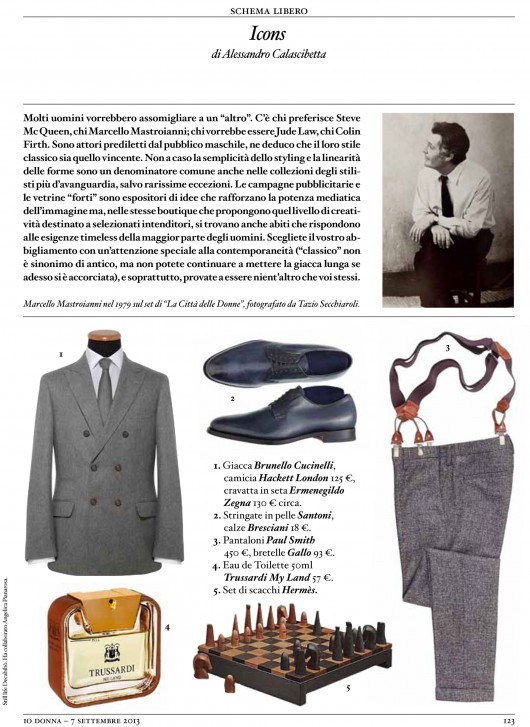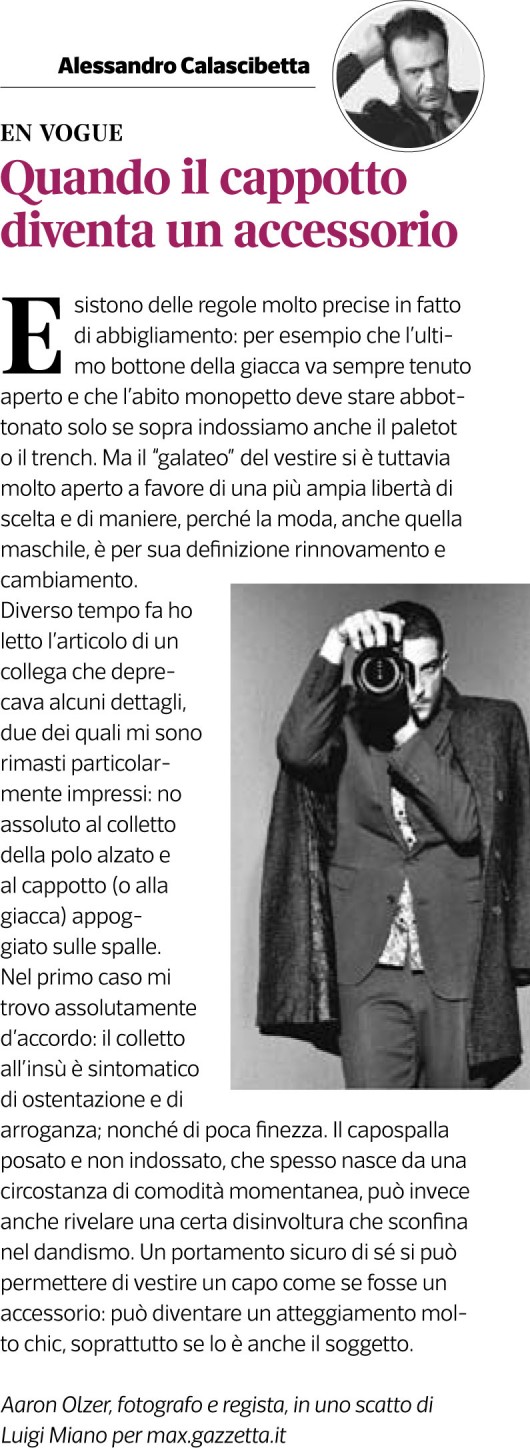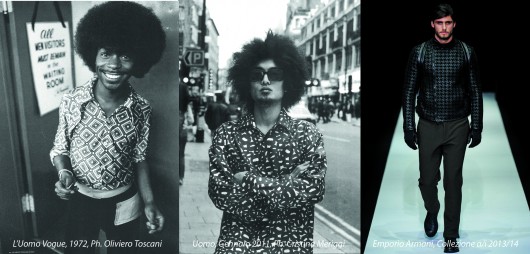SETTE MAGAZINE EN VOGUE SCATTI D’AUTORE: E UNA GIACCA TIRA L’ALTRA
In a fashion shooting production, the stylist mixes clothes and sets them on the basis of his creativity. The fitting of the picture I’ve choosen for this week seems to be a risk: it’s known that two overlaid jackets actually don’t represent an applicable outfit but, in situations like this, wherein the subject has a thin build and blazers are made by soft and unlined wool, the final effect is really interesting. That man reader, little used to editors’ flair and fashion’s oddity, doesn’t have to think that these suggestions have to be taken to the letter: stylist’s skill stays in catching the reader’s attention on fabric’s beauty, prints’ opulence and – why not – photographic effect, that in this case is worthy to be included among those shots that will leave a style mark in fashion photography. In this shoot by Miano, side light creates shades on the actor’s (Fabio Tameni) face and on clothes (by Paul Smith), giving back that magic that only good photographers can give. If you feel like browsing books about great masters – from Irving Penn to Mario Sorrenti- you’ll find the same charm, the same splendour. And the same elegance. Fabio Tameni in Luigi Miano’s picture for Max.gazzetta.it. Clothes by Paul Smith, October 2012.





